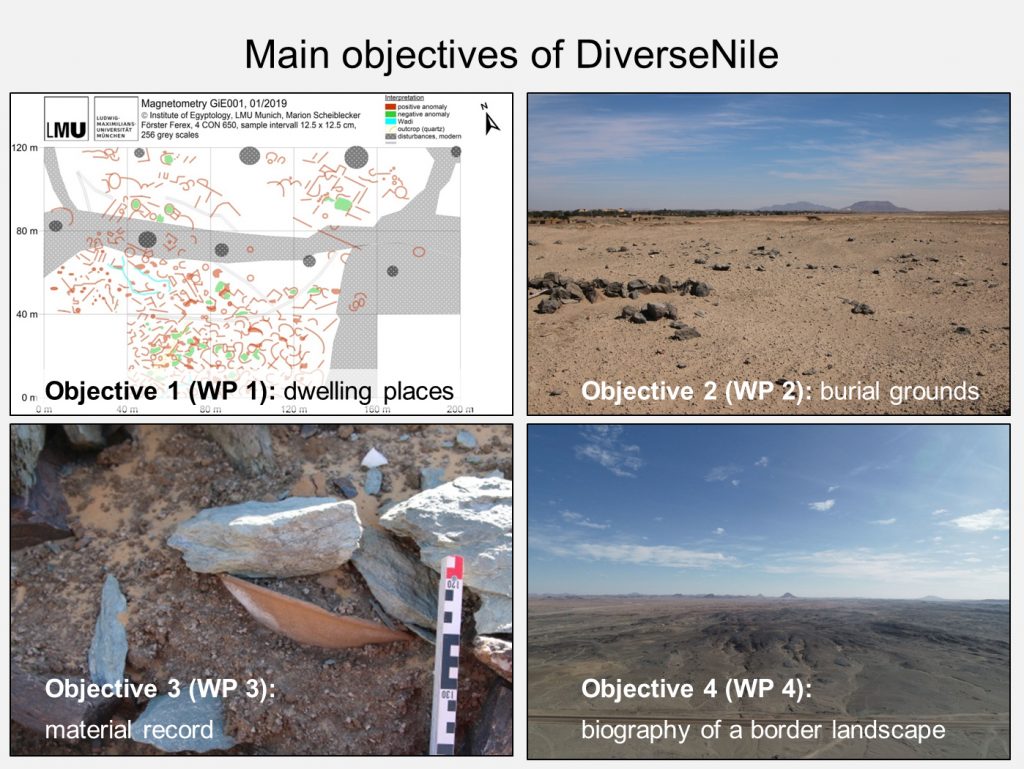I am both very thankful and extremely proud to be one of the four LMU scientists being awarded with an ERC Consolidator Grant 2019, thus with the opportunity to conduct cutting-edge research for 5 years with a budget of 2 million EUR. My second ERC grant after a Starting Grant in 2012!
My project is entitled “Cultural diversity in the Middle Nile Valley. Reconstructing biographies in the periphery of urban centres in northern Sudan during the Bronze Age” and has the acronym DiverseNile. Within the MUAFS concession, we will be investigating the cultural contact between the various groups inhabiting this part of the Nile valley and their relations with the intriguing landscape of this region.
My goal is to refine the cultural entanglement concept in New Kingdom Nubia with its current elite and religious bias in favour of addressing actual cultural diversity in peripheral zones. In order to test my main hypothesis, I will develop a new concept, re-designing the concept of contact spaces (Stockhammer/Athanassov 2018) in combination with the landscape biography approach (Kolen/Renes 2015). This new concept of ‘contact space biography’ aims to investigate whether degrees of cultural diversity and entanglement relate to the peripheral location of the sites, which may also be influenced by the general landscape.
With our new archaeological and scientific evidence we will move the current understanding of Bronze Age Middle Nile groups to a new level, first of all because of the combined assessment of villages and cemeteries. The novel concept will also allow highlighting fluid perceptions of what was considered as centre and as periphery.
The major goal of DiverseNile is to evaluate the specific living conditions in the region between Attab to Ferka in direct comparison with the urban centres of Amara West and Sai (see my ERC Starting Grant project AcrossBorders https://acrossborders.oeaw.ac.at/ ), and to reconstruct biographies based on material and textual evidence. My new cohesive approach considering humans, non-humans, technologies and environmental properties in a peripheral frontier region in northern Sudan has four main objectives and corresponding work packages.

We hope that our present comprehension of categorisations of ‘Nubian’ or ‘Egyptian’ sites will be significantly revised by this new method capitalising on the concept of the dynamics of cultural encounters and add most important new insights to the growing debate of how to understand ‘Nubian’ and ‘Egyptian’.The field-related outcome will thus be a fresh understanding of processes currently labelled either as ‘Egyptianisation’ (with a one-dimensional perception of culture) or ‘cultural entanglement’ (with an elite bias). Our bottom-up research will illustrate the connectivity, complexity and social diversity within life worlds along the Nile in the presently unidentified periphery of urban centres. Can’t wait to start this exciting project!
Last but definitely not least, I must thank all of those who supported my application in various respects, from colleagues to friends, family and my partner. Foremost is, however, the wonderful MUAFS team – such a huge project is only possible as team work and I am very proud of my excellent team of researchers and graduate students who contributed a lot to our joint success!
References
Stockhammer/Athanassov 2018 = Stockhammer, P.W. and Athanassov, B. 2018. Conceptualising Contact Zones and Contact Spaces: An Archaeological Perspective, 93‒112, in: S. Gimatzidis, M. Pieniążek and S. Mangaloğlu-Votruba (eds.), Archaeology across Frontiers and Borderlands. Fragmentation and Connectivity in the North Aegean and the Central Balkans from the Bronze Age to the Iron Age. OREA 9. Vienna.
Kolen/Renes 2015 = Kolen, J. and Renes, J. 2015. Landscape Biographies: Key Issues, 21–47, in: J. Kolen, H. Renes and R. Hermans (eds.), Landscape Biographies: Geographical, Historical and Archaeological Perspectives on the Production and Transmission of Landscapes. Amsterdam.
